Self-watering planters are becoming a popular choice for indoor gardening because they make plant care easier. These planters have a built-in water container that allows the plants to take water when needed, so you don’t need to water them as often.
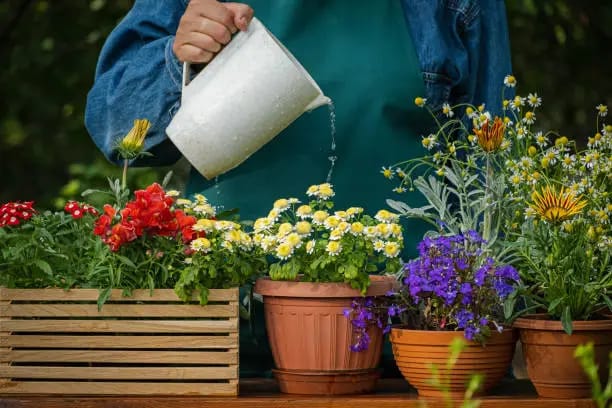
This helps prevent overwatering and keeps plants healthy. For those who are into gardening or just starting out, self-watering planters are great because they keep the right amount of water in the soil. They make growing plants easier and save time, so anyone can enjoy gardening with less work.
What Are Self-Watering Planters?
Self-watering planters work with a simple system that stores water underneath. Here’s how it works:
Water Reservoir:
The bottom of the planter holds excess water, which the plant can use when it needs it most.
Wicking Mechanism:
Inside the planter, there is a wick or material that acts like a sponge, slowly moving water from the reservoir to the soil and roots.
Capillary action:
When the soil near the plant dries out, the bulb draws enough water from the reservoir to keep the plant hydrated. In this way, the plant gets water only when it needs it.
For starters, this system helps make sure plants keep getting water, even if you forget for a few days. This is an easy and effective way to care for plants with less work.
Benefits of Using Self-Watering Planters
Self-watering planters have many advantages that make them a great choice for those who want an easy way to maintain their indoor gardens:
Reduced Watering Frequency:
One of the best things is that you don’t have to water your plants as often. The planter’s water reservoir holds excess water, so plants can water themselves for days or weeks, depending on the type of plant.
Prevents Overwatering:
Overwatering is a common problem for indoor gardeners, especially beginners. Self-watering allows plants to receive only the water they need, and prevents the soil from becoming too wet.
Consistent Moisture Levels:
These planters water the roots slowly, ensuring that the plants always have enough moisture. It helps plants grow better and prevents them from drying out.
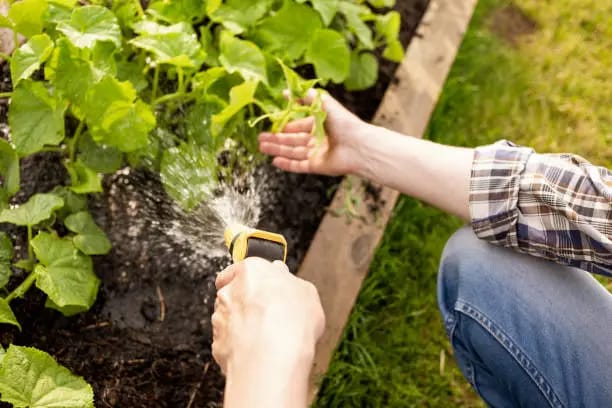
For busy people or those who want less daily work, self-watering planters are perfect. They make it easy to keep your indoor garden healthy and green.
Choosing the Right Self-Watering Planter
When choosing a self-watering planter, think about these things to make sure it works well for your indoor plants:
Size:
Choose a planter that matches how big your plant will be. Large plants with deep roots such as tomatoes or indoor trees require large planters with large water reservoirs.
Small plants or herbs can do well in small planters. Make sure there is enough room for the roots to grow.
Materials:
Self-watering planters come in materials such as plastic, ceramic, and metal. Plastic is light, strong and usually cheap, so it’s good for beginners.
Ceramic looks nice but can be heavy and break easily, and metal planters look cool but can rust. Choose materials that suit your space and budget.
Design:
Look for designs that work well and look good. Some planters have clear water reservoirs, so you can see when to water, while others hide the reservoirs for a sleeker look.
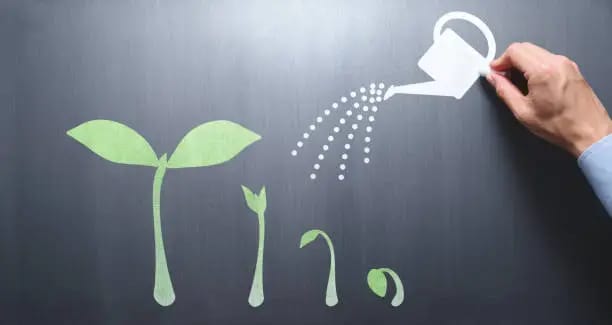
Choose a design that matches your home and is easy to use.
Common Mistakes to Avoid with Self-Watering Planters
When using a self-watering planter, there are a few common mistakes beginners can make. Here are some things to watch out for and how to fix them:
Using the wrong soil:
Regular garden soil can be tightly packed and hold water in a self-watering planter.Use a special potting mix that drains well, such as perlite or vermiculite.
This helps water move freely and prevents the soil from becoming too wet.
Overfilling reservoirs:
Overwatering reservoirs can cause stagnant water and root rot. Do not overfill the reservoir. Check the fill line for one or be careful not to overfill.
Allow the soil to dry out slightly between refills, especially for plants that don’t like soggy roots.
Neglecting to Clean the Reservoir:
Over time, algae or mold can grow in the reservoir, which can harm your plants. Clean the reservoir every few weeks, especially if you notice odors or build-up. Wash it with water and a mild cleaner to keep it fresh.
Choosing Plants:
That Don’t Like Constant Moisture: Not all plants like constant humidity. Some, like cacti or succulents, prefer dry conditions. Research your plants before using a self-watering planter.
If you want to grow dry soil plants, look for a planter that allows you to control the humidity level
Ignoring the Reservoir Level Indicator:
Some planters have a water level indicator, but people often forget to check it. Make it a habit to check the water level every few days to make sure it doesn’t run out.
Setting reminders can help you remember.
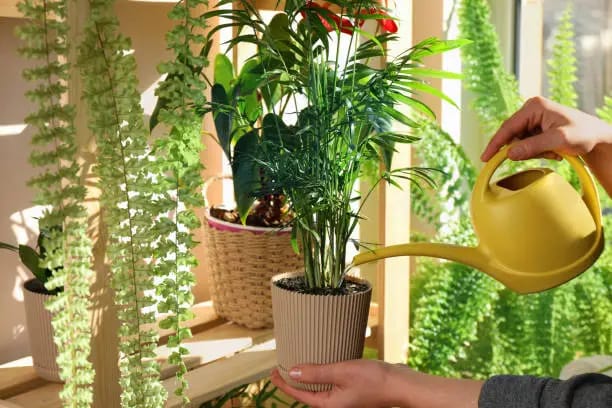
By avoiding these mistakes and following these solutions, your self-watering planter will work better, and your plants will stay healthy with less effort.
How to Care for Indoor Plants in Self-Watering Planters
Monitoring your plants’ health in self-watering planters is important for keeping them happy and growing well. Here are some tips to help you take care of your indoor plants:
1.Watch for Signs of Under- or Over-Watering
Under-Watering: Even though self-watering planters help, the reservoir might run out of water, especially in warmer months.
Signs of under-watering include:Wilting or drooping leaves,Dry, brittle leaves or stems,Slow growth or yellowing of older leaves.
Over-Watering: Poor drainage or the wrong soil can cause over-watering. Signs include:yellow or mushy leaves,fungal growth or mold on the soil,a bad smell from the soil (a sign of root rot),touch the soil to check its moisture.
If it’s soggy, let it dry before refilling the reservoir. If it’s dry, add water.
2. When to Refill the Reservoir
Some planters have a water level indicator, but if yours doesn’t, follow these tips:
For water-loving plants (like ferns), refill the reservoir when the soil starts to dry on the surface.
For plants that like drier soil (like herbs), let the soil dry more before refilling.
Make a schedule based on how much water your plants use. Check more often during hot weather.
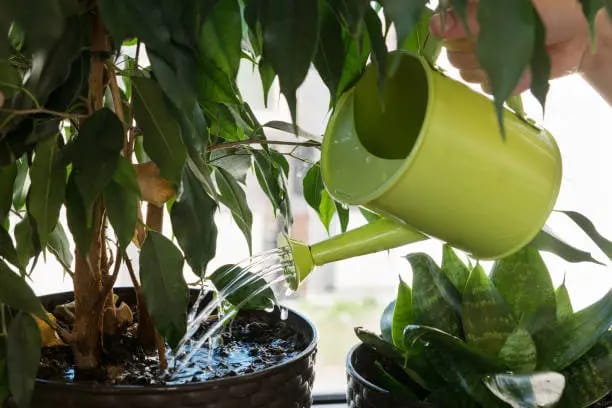
3. Monitor Leaf Color and Growth
Healthy plants have green leaves and grow steadily. Watch out for changes:
Yellowing Leaves: This might mean the plant isn’t getting enough nutrients, water, or light.
Pale Leaves: Could mean the plant needs more sunlight or nutrients.
Wilting or Curling Leaves: Could be from underwatering or uneven moisture.
Conclusion
In summary, self-watering planters are a great choice for anyone who wants to make indoor gardening easier. These planters store water in a reservoir and give steady moisture to the plant roots.
This means you don’t have to water as often, and it helps prevent overwatering.
They’re perfect for busy people and beginners who want low-maintenance plant care. By picking the right size, material, and design, and avoiding mistakes like using the wrong soil or forgetting maintenance, you can have a healthy indoor garden with little effort.
If you’re looking for an easier way to take care of your plants, try a self-watering planter. It’s a simple and efficient way to keep your plants healthy, and you’ll enjoy a green, beautiful garden without a lot of work.
Give it a try and see your plants grow with less effort!
FAQs
How often do you need to refill a self-watering planter?
How often you refill the planter depends on the type of plant, the size of the planter, and the environment. Usually, you’ll need to refill the reservoir every 1–3 weeks. Plants that love water or are in warmer places may need more refills, while plants that don’t need much water can go longer
Do self-watering planters cause root rot?
Self-watering planters help prevent overwatering because plants only take the water they need. But if you overfill the reservoir or use soil that doesn’t drain well, the roots could sit in too much water and get root rot.
Can you use self-watering planters for all types of plants?
Most plants, like herbs, tropical plants, and ferns, that like steady moisture do well in self-watering planters. But plants that like dry soil, like succulents and cacti, may not do as well unless you manage the moisture carefully.
Do self-watering planters need special soil?
Yes, it’s best to use light, well-draining potting mix. Regular garden soil can get packed tightly and block the water flow. A mix with perlite, peat moss, or coco coir works well for self-watering planters because it lets air and water move more easily.
How do I know if the reservoir is empty?
Many self-watering planters have a water level indicator to show when you need to refill the reservoir. If your planter doesn’t have one, you can check by feeling the top layer of soil. If it feels dry, it’s probably time to add more water.
